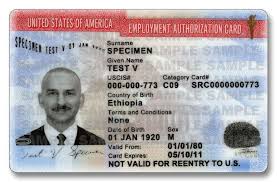The Visa Bulletin is like a monthly newsletter for immigrant visas. It tells us whether family and employment-based categories are current or backlogged. The Department of State (DOS) and USCIS team up to publish it every month. It’s has two charts: the Final Action Chart (shows priority dates that are current and available) and the Dates for Filing Chart (shows priority dates expected to become current during the fiscal year).
For October and November 2023, USCIS said to use the Dates for Filing Chart to figure out if family and employment-based adjustment of status applications can be filed. The November 2023 Visa Bulletin is mostly a copy-paste of the October 2023 Visa Bulletin, with a few exceptions we’ll get into.
II. Family-Based Case dates are stagnate; No More F2A Concurrent Filing
From September to November 2023, the family-based categories haven’t budged, except for F2A (spouses and children of permanent residents). Until recently, F2A was current on the Dates for Filing Chart, but that’s changed in FY2023. Now, the F2A category (for most countries) has a cutoff date of September 1, 2023, the same as last month, which means there can be no concurrent filing of the I-130 and I-485 applications in this category. The Final Action Date in this date is even farther behind at February 8, 2019.
III. Employment-Based Applications: Still Retrogressed
The October and November 2023 Visa Bulletins continued the retrogression that started with the May 2023 bulletin. Despite the belief that both categories would recover and become current in October, 2023, the EB-2 and EB-3 worldwide had and continue to have cutoff dates since the start of the new fiscal year on October 1, 2023, which is a first. The EB-3 worldwide Final Action Date moved a bit from May 2021 to December 1, 2021, but EB-2 worldwide is still stuck in July 2022. In the November 2023 Visa Bulletin, EB-2 worldwide Final Action Date moved forward by a week, from July 8, 2022, to July 15, 2022. The EB-2 worldwide Dates for Filing however stayed at January 1, 2023. EB-1 worldwide Final Action Date is current, but China and India are still experiencing retrogression.
Remember, this is just a high-level overview. For the full details, you’ll want to check out the actual Visa Bulletins or consult with a legal professional.



 As most, if not all, of you, have heard, our President is preparing an executive order to limit immigration into the United States. At this time, as the order has not been finalized, we cannot say what the impact will be on individual cases. Below is a list of what we have heard may, or may not, be included in the order:
As most, if not all, of you, have heard, our President is preparing an executive order to limit immigration into the United States. At this time, as the order has not been finalized, we cannot say what the impact will be on individual cases. Below is a list of what we have heard may, or may not, be included in the order: Not everyone realizes but there are huge backlogs of cases for employment based immigrant visas. For about 1 year now the EB-1 category (Extra-ordinary Ability, Outstanding Professor and Researchers and Intra-Company Transferees) category has been backlogged about 1 year for most of the world and several years for China and about 4-5 years for India. The EB-2 category, while current for most of the world, has been backlogged about 4 years for China and about 10 years for India. The same is true of the EB-3 category. For those from India and China especially, the requirement of having to wait 10 years or more for a green card is hard on the family. It can cause children, who may be 2 or 3 when they arrive in the US, to age out before a green card can be obtained – forcing these now grown Children to either go home or get their own visas and begin their own processes. Furthermore, the employees are working for years without hope of major pay increases or promotions, for fear of being fired (if they ask and are denied) and loosing their place in line.
Not everyone realizes but there are huge backlogs of cases for employment based immigrant visas. For about 1 year now the EB-1 category (Extra-ordinary Ability, Outstanding Professor and Researchers and Intra-Company Transferees) category has been backlogged about 1 year for most of the world and several years for China and about 4-5 years for India. The EB-2 category, while current for most of the world, has been backlogged about 4 years for China and about 10 years for India. The same is true of the EB-3 category. For those from India and China especially, the requirement of having to wait 10 years or more for a green card is hard on the family. It can cause children, who may be 2 or 3 when they arrive in the US, to age out before a green card can be obtained – forcing these now grown Children to either go home or get their own visas and begin their own processes. Furthermore, the employees are working for years without hope of major pay increases or promotions, for fear of being fired (if they ask and are denied) and loosing their place in line. USCIS has released the February 2018 Visa Bulletin. While there is certainly some movement forward, the guidance given by Mr. Oppenheim last month is still in effect and has not changed. Relevant changes are listed below.
USCIS has released the February 2018 Visa Bulletin. While there is certainly some movement forward, the guidance given by Mr. Oppenheim last month is still in effect and has not changed. Relevant changes are listed below. On September 24, 2017, the President issued a new Executive Order (“EO”) entitled “Enhancing Vetting Capabilities and Processes for Detecting Attempted Entry into the United States by Terrorists or other Public Safety Threats”. This new EO builds upon the last order, which was only valid for 90 days. However, part of the old EO directed DHS to do a worldwide review to determine what additional information is needed from each foreign country to assess whether foreign nationals who seek to enter the United States pose a security or safety threat. DHS completed that review and gave the President a list of seven countries that had “inadequate” information sharing practices. The new EO implements certain types of restrictions against nationals of these seven countries (plus one additional country that the President felt posed security risks) in terms of their ability to get certain visas.
On September 24, 2017, the President issued a new Executive Order (“EO”) entitled “Enhancing Vetting Capabilities and Processes for Detecting Attempted Entry into the United States by Terrorists or other Public Safety Threats”. This new EO builds upon the last order, which was only valid for 90 days. However, part of the old EO directed DHS to do a worldwide review to determine what additional information is needed from each foreign country to assess whether foreign nationals who seek to enter the United States pose a security or safety threat. DHS completed that review and gave the President a list of seven countries that had “inadequate” information sharing practices. The new EO implements certain types of restrictions against nationals of these seven countries (plus one additional country that the President felt posed security risks) in terms of their ability to get certain visas.
 The Department of State released the visa bulletin for October 2016 recently. Below is a summary of movement and changes.
The Department of State released the visa bulletin for October 2016 recently. Below is a summary of movement and changes.